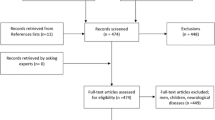Abstract
The aim of this study was to assess the effects of voluntary pelvic floor contraction and voluntary pelvic floor relaxation on the urethral closure pressure at rest. In 104 consecutive women, three urethral pressure profiles were performed: standard profile at rest, with voluntary pelvic floor contraction and with voluntary pelvic floor relaxation. A low-pressure urethra was defined as a maximum urethral closure pressure of ≤20 cmH2O. The age ranged between 24 and 82 years. The maximum urethral closure pressure at rest was significantly augmented during pelvic floor contraction (mean: 18 cmH2O). Compared with the first profile, it decreased significantly with pelvic floor relaxation (mean decrement: 8 cmH2O). A low-pressure urethra was detected in 5 women during the first profile and in a further 11 during pelvic floor relaxation. Because of the significant influence of pelvic floor activity on the urethral closure pressure at rest, the scientific and clinical credibility of urethral pressure measurements remain questionable.
Similar content being viewed by others
References
Abrams P, Cardozo L, Fall M, Griffiths D, Rosier P, Ulmsten U et al (2002) The standardisation of terminology of lower urinary tract function: report from the Standardisation Sub-committee of the International Continence Society. Neurourol Urodyn 21:167–178
Lose G, Griffiths D, Hosker G, Kulseng-Hanssen S, Peruccini D, Schäfer W, Thind P, Versi E (2002) Standardisation of urethral pressure measurement: report from the Standardisation Sub-committee of the International Continence Society. Neurourol Urodyn 21:258–260
Sultana CJ (1995) Urethral closure pressure and leak-point pressure in incontinent women. Obstet Gynecol 86:839–842
Bump RC, Coates KW, Cundiff GW, Harris RL, Weidner AC (1997) Diagnosing intrinsic sphincteric deficiency: comparing urethral closure pressure, urethral axis, and Valsalva leak point pressures. Am J Obstet Gynecol 177:303–310
Sand PK, Bowen LW, Panganiban R, Ostergard DR (1987) The low pressure urethra as a factor in failed retropubic urethropexy. Obstet Gynecol 69:399–402
Bowen LW, Sand PK, Ostergard DR, Franti CE (1989) Unsuccessful Burch retropubic urethropexy: a case controlled urodynamic study. Am J Obstet Gynecol 160:452–458
Rud T, Andersson K-E, Asmussen M, Hunting A, Ulmsten U (1980) Factors maintaining the intraurethral pressure in women. Invest Urol 17:343–347
Haeusler G, Sam C, Chiari A, Tempfer C, Hanzal E, Koelbl H (1998) Effect of spinal anaesthesia on the lower urinary tract in continent women. Br J Obstet Gynaecol 105:103–106
Plante P, Susset J (1980) Studies of female urethral pressure profile. Part 1. The normal urethral pressure profile. J Urol 123:64–69
Bump RC, Mattiasson A, Bo K, Brubaker LP, DeLancey JOL, Klarskov O, Shull BL et al (1996) The standardization of terminology of female pelvic organ prolapse and pelvic floor dysfunction. Am J Obstet Gynecol 175:10–17
Laycock J (1994) Clinical evaluation of the pelvic floor. In: Schüssler B, Laycock J, Norton P, Stanton S (eds) Pelvic floor re-education. Principles and practice. Springer, London, pp 42–48
Mant J, Painter F, Vessey M (1997) Epidemiology of genital prolapse: observation from the Oxford Family Planning Association Study. Br J Obstet Gynaecol 104:579–585
Lubowski DZ, Swash M, Nickholls RJ, Henry MM (1988). Increase in pudendal nerve terminal motor latency with defaecation straining. Br J Surg 75:1095–1097
Bø K, Talseth T (1997) Change in urethral pressure during voluntary pelvic floor muscle contraction and vaginal electrical stimulation. Int Urogynecol J 8:3–7
Bø K, Larsen S, Oseid S, Kvarstein B, Hagen R, Jorgensen J (1988) Knowledge about the ability to correct pelvic floor muscle exercises in women with urinary stress incontinence. Neurourol Urodyn 7:261–262
Fischer W, Baessler K (1996) Postpartum pelvic floor conditioning using vaginal cones: not only for prophylaxis against urinary incontinence and descensus. Int Urogynecol J 7:208–214
Kulseng-Hanssen S, Kristoffersen M (1988) Urethral pressure variations in females with and without neurourological symptoms. Scand J Urol Nephrol [Suppl] 114:48–52
Plevnik S, Janez J (1983) Urethral pressure variations. Urology 21:207–209
Tapp AJS, Cardozo LD, Versi E, Studd JWW (1988) The prevalence of variation of resting urethral pressure in women and its association with lower urinary tract function. Br J Obstet Gynaecol 61:314–317
Kulseng-Hanssen S (1983) Prevalence and pattern of unstable urethral pressure in one hundred seventy-four gynecologic patients referred for urodynamic investigation. Am J Obstet Gynecol 146:895–900
Sand PK, Bowen LW, Ostergard DR (1986) Uninhibited urethral relaxation: an unusual cause of incontinence. Obstet Gynecol 68:645–648
McGuire EJ, Fitzpatrick CC, Wan J, Bloom D, Sanvordenker J, Ritchey M, Gormley EA (1993) Clinical assessment of urethral sphincter function. J Urol 150:1452–1454
Acknowledgement
We thank the urodynamic nurses Irene Hauser and Elsbeth Ludwig for their substantial help in conducting this study.
Author information
Authors and Affiliations
Corresponding author
Additional information
Part of the results were presented at the Annual Meeting of the International Continence Society (ICS) 1999 in Denver and at national German and Swiss gynecology meetings
Editorial Comment: This very interesting study on the influence of the pelvic floor muscles on urethral pressure gives basic information about the functionality of the urethra. There is still a great lack of knowledge as we really do not know “what exactly we measure” when we perform an urethral pressure profile. The study points out that further investigations are necessary that should focus on the different parts of the pelvic floor muscles and their influence on the continence mechanisms. New investigative options such as magnetic nuclear resonance (MNR) and perineal ultrasound should be involved. It would have been even more interesting if the results of the performed perineal ultrasound would have been described beside the palpation of the muscle strength
Rights and permissions
About this article
Cite this article
Baessler, K., Miska, K., Draths, R. et al. Effects of voluntary pelvic floor contraction and relaxation on the urethral closure pressure. Int Urogynecol J 16, 187–191 (2005). https://doi.org/10.1007/s00192-004-1232-y
Received:
Accepted:
Published:
Issue Date:
DOI: https://doi.org/10.1007/s00192-004-1232-y



